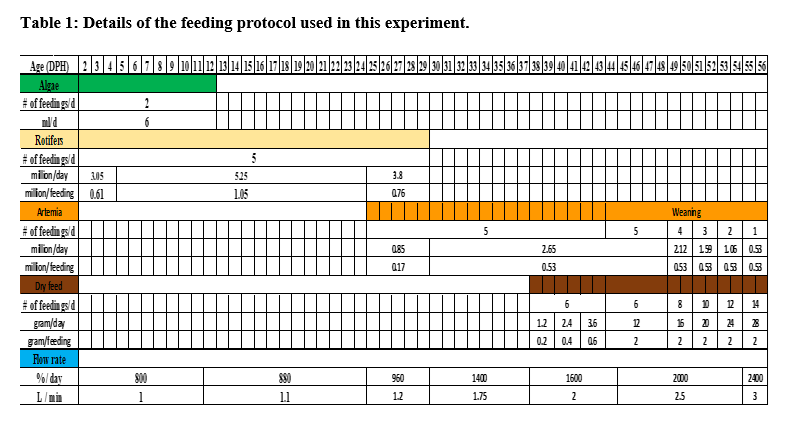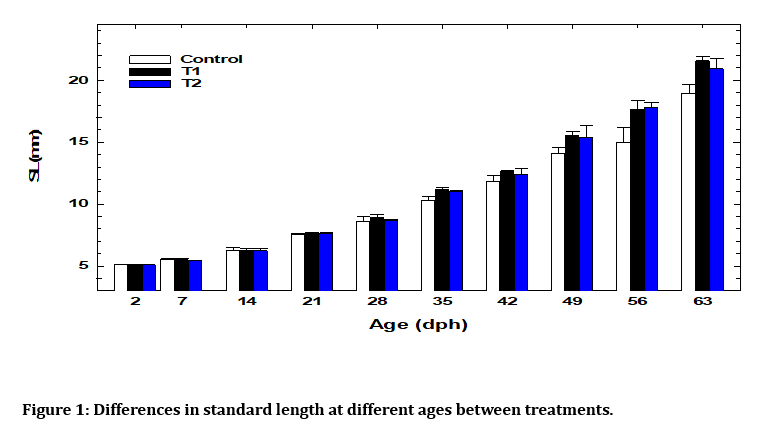NEW ROTIFER ENRICHMENT IMPROVES GROWTH IN LARVAL ATLANTIC COD Gadus morhua
Introduction
Early growth and nutrition in cod larval farming significantly affect weight development during later stages, impacting the overall performance of farmed fish (Hansen et al., 2018). Renewed interest in cod farming has emerged due to advancements in selective breeding and declining wild stocks (Puvanendran et al., 2022). To further develop the industry, new enrichment products for rotifers have been tested in cod production.
Materials and Methods
Eggs and sperm were stripped from broodstock and fertilized using the standard protocol at the CMA. Five families were created, and fertilized eggs from each family were incubated in 25L conical silo incubators with a flow-through of ambient water at 4-5°C. After 100% hatch, 3,000 larvae from each family were transferred to one of four replicates first feeding tanks (190L) per treatment (15,000 larvae per tank), with water temperature gradually increased from 4-5°C to 10°C over 5-10 days (~1°C per day).
Feeding Protocol
Rotifers were enriched with three different enrichments:
- Control group – Rotifers enriched with Multigain®, PhosphoNorse®, Pavlova, Chlorella.
- Treatment 1 – Rotifers enriched with new enrichment formula I.
- Treatment 2 – Rotifers enriched with new enrichment formula II.
Results
Growth rate, survival, and deformities were measured across treatments. Deformities in juveniles were analyzed using x-ray. Protein, fat, and mineral content in juveniles and live feed were also analyzed. The new enrichments (T1 and T2) resulted in increased growth rates compared to the control group, with no significant differences in deformities or survival between groups.
Acknowledgements
This research was supported by Odd Berg Gruppen AS, Nofima AS, and the Norwegian Ministry of Trade, Industry and Fisheries.
References
- Puvanendran, V., et al. (2022). Development of cod farming in Norway: Past and current biological and market status and future prospects and directions. Reviews in Aquaculture, 14(1), 308-342.
- Hansen, Ø.J., Puvanendran, V., Jøstensen, J.P., & Falk‐Petersen, I.B. (2018). Early introduction of an inert diet and unenriched Artemia enhances growth and quality of Atlantic cod (Gadus morhua) larvae. Aquaculture Nutrition, 24(1), 102-111.

